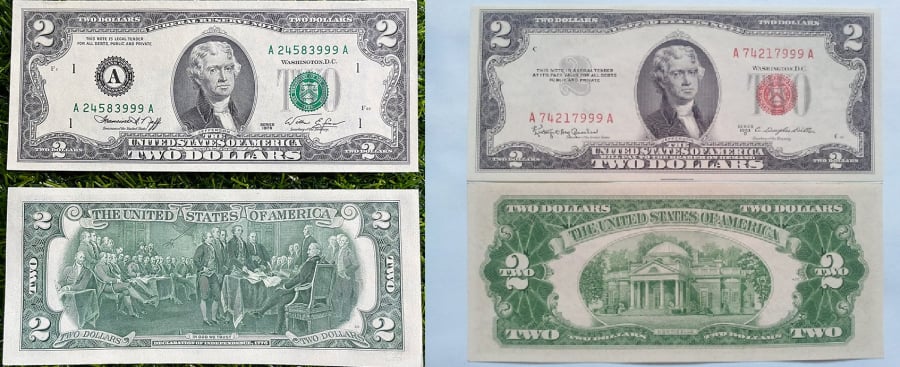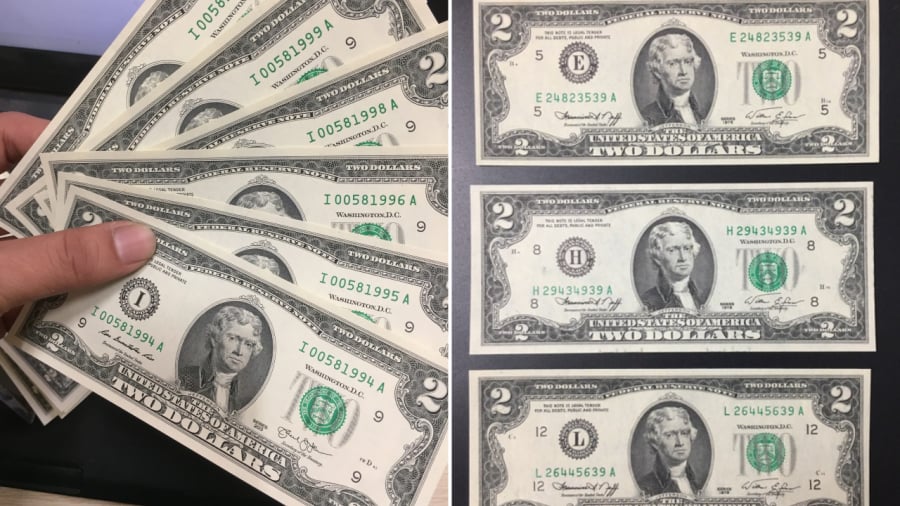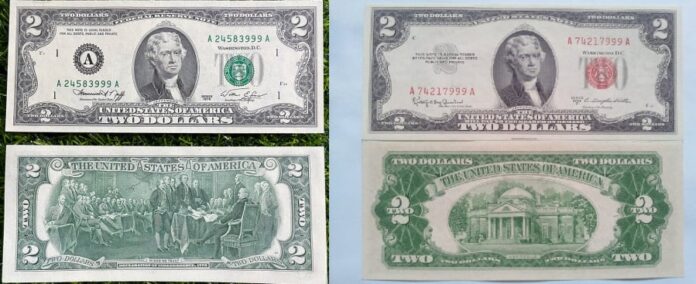The $2 bill is a rare sight compared to other denominations of US currency. Its limited production runs account for its scarcity, with only about 1% of all US currency produced being $2 bills.
The history of the $2 bill’s production is quite interesting. First issued in 1862, it has only been printed intermittently since then, with production runs in the 20th and 21st centuries occurring in select years such as 1917, 1918, 1928, 1953, 1963, 1976, 1995, 2003, and 2009. The design has also undergone changes over the years, adding to its collectibility.

The $2 Bill: A Symbol of Good Luck
The $2 bill is considered a lucky charm by many, not just in the US but around the world. The 1976 series, in particular, is believed to be the luckiest. This belief stems from a story of a plane crash survivor who was found with only a $2 bill in his wallet, leading people to associate it with good fortune. Additionally, the 1976 series commemorated the 200th anniversary of the US, making it even more special.
Today, the 1976 $2 bill is highly sought-after by collectors and is quite rare. Other lucky series include the 1917 and 1928 bills, and the 1963 series with a red seal is also considered special.
A Lucky Number and a Symbol of Power
In many Eastern cultures, the numbers 6 and 8 are considered lucky, associated with wealth and prosperity. Similarly, the number 2 is also considered a lucky number, symbolizing happiness and good fortune for couples. It’s not uncommon for couples to gift each other $2 bills as a token of their love and commitment.

The Rarity of the $2 Bill
What sets the $2 bill apart from other denominations is the depiction of 42 senior US officials on the back, who collectively signed the Declaration of Independence in 1774. This powerful imagery adds to the bill’s allure and makes it a symbol of authority and good fortune for many Americans.
However, it’s important to note that the design of the $2 bill has varied over the years, depending on the production year.
Dispelling Bad Luck
Interestingly, the $2 bill was not always considered a lucky charm. In the past, especially among gamblers, it was associated with bad luck. On a gambling table, the $2 bill represented the lowest value, and receiving it was considered an ill omen. Gamblers would often cut off a corner or kiss the bill to ward off the perceived bad luck.
However, this superstition didn’t last, and the $2 bill eventually became associated with good luck, as people believed that getting rid of the bad luck would bring more fortune their way.






































